Building your own home is a dream that more and more people are exploring. Annual figures show some 5,000 new builds in the Republic and a further 2,000 in Northern Ireland, according to Astrid Madsen, editor of Self Build Ireland, a magazine that also runs events and recently launched a digital, subscription-based monthly service where those interested can share knowledge and ideas.
Using figures from the Department of Housing and the UK’s National Custom and Self Build Association, she says that interest on our island per capita far exceeds the numbers doing likewise in the UK.
The demographic skews far younger in Ireland too. She says it is mainly undertaken by those with young families rather than retirees, which make up the bulk of the UK’s demographic.
While we should arguably be moving into our towns and villages for sustainability reasons, the majority of self-builds are constructed either in the outer suburbs of cities or in the countryside.
In the past the latter contributed to ribbon development.

“You can’t blame people for wanting to live in modern homes,” says architect Hugh Wallace, one of the judges of RTÉ TV’s Home of the Year and presenter of the recent show My Bungalow Bliss. He’s joining their number as he is the middle of a build off Clanbrassil Street in Dublin 8 but is quick to add that he has a contractor looking after his project.
“Self-builders have always been eco-conscious and early adopters of new technologies,” Madsen says, but in today’s world capitalising on green technologies is also a way of reducing energy costs. It also means you can create spaces that suit contemporary life rather than shoehorning modern living into Georgian, Victorian or Edwardian abodes.
'The location, on the outskirts of Grange, is where some of Sally Rooney's Normal People was filmed'
Now in its 8th season, Home of the Year returns to our screens on Tuesday, February 15th, and taps into this growing trend by featuring several self-build examples within the 21 homes selected for the series.
One stand-out property, overlooking Streedagh Beach in Co Sligo, and previously featured in Self Build magazine, was built in stages by husband and wife team Martin O’Dwyer and Saoirse Flynn O’Dwyer, who had rented for several years.
Their approach is timely. Their dream haybarn-cum-traditional cottage is a mix of derelict and new and should give hope to those looking to taking advantage of the new grants of up to €30,000 to help buy derelict properties to renovate and live in, which is soon to be launched by Minister for Housing Darragh O’Brien.
The derelict, two-room house had one thing going for it: spectacular views.
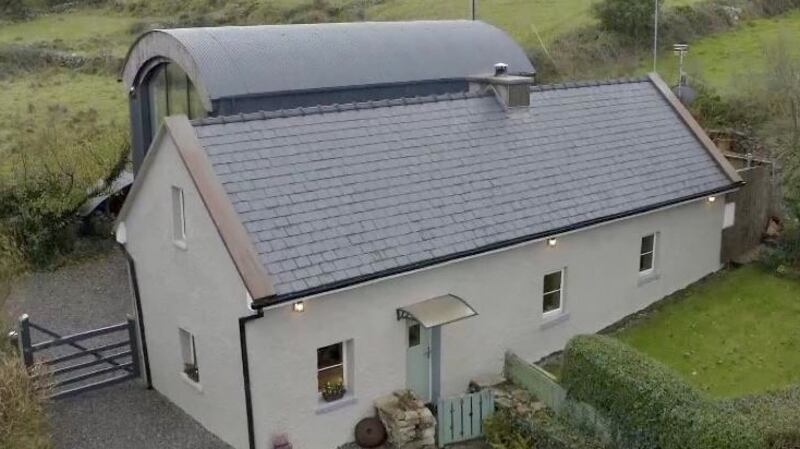
The location, on the outskirts of Grange, is where some of Sally Rooney’s Normal People was filmed and where Armada wrecks gave up some of their treasures. To the north is Mullaghmore where you can see the silhouette of Lord Mountbatten’s Classiebawn Castle.
They got the keys in the summer of 2014 but it took them 15 months to make the place habitable. It needed a new roof, windows and doors, had a mud and flagstone floor, and neither electricity nor heating.
Martin took time out of work to focus on the project full-time. “I had a Bob the Builder year,” says the privacy and data protection law specialist who attributes his construction skill set to his carpenter father and builder brothers. They were under time pressure to get in because Saoirse was pregnant with twins.
Six inches of that plaster were stripped from the limestone and sandstone walls using a flat head screwdriver to rake the joints. He says it had a pointy head by the time he was done.
Surprises he unearthed included the large inglenook hearth, complete with original niches, and a butter fridge, a hole in the external wall near the front door, designed to keep dairy products cool pre-refrigeration. It now houses a lamp.
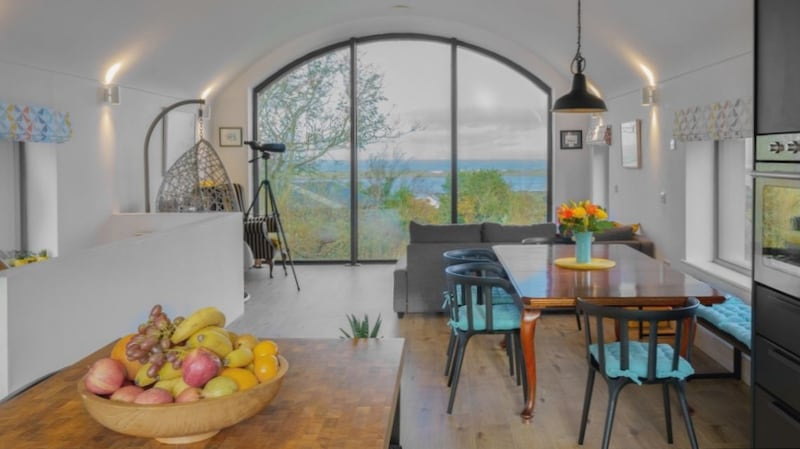

The babies, Art and Aengus, were given in the second room downstairs while the couple slept in the mezzanine, accessing it via a library ladder that they pulled up at night like a drawbridge. Trips to the bathroom or to nurse children in the middle of the night often proved tricky.
The build and refurbishment took place in stages. They estimate the cottage, which they bought for cash, cost about €60,000 to renovate, during 2014 and 2015, which was more than they paid for it and at a time when materials were cheaper.
They divided the workload. Saoirse took on the job of getting planning for the new build while Martin did most of the physical work.
A pair of French doors that opened the cottage to the back now links the original dwelling to a new two-storey structure.
'Factor in many planning visits. Even before we bought the cottage we'd booked a pre-planning meeting with the council to see what we might be able to do'
Shaped like a haybarn, it has a plastic-coated corrugated steel roof that mimics the surrounding agricultural sheds. It is painted a standard RAL colour 7016n to make the new build blend in.
With an eye to keeping things on budget they used an architectural technician, Martin McGloin of Castlegal Architectural Services, to draw up the design in a way that was compliant with planning and suited the site. By doing this he told them that they saved between €80,000 and €90,000.
“I drew up what would fulfil our requirements in a graph paper notebook, what was in keeping with the environment and the location,” Saoirse explains. She sketched out everything as well as sourcing imagery online and in magazines.
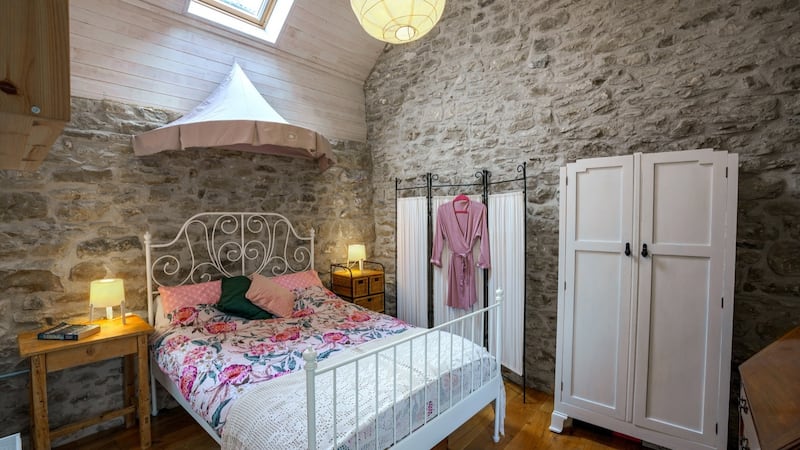
They made compromises. Investing in a standard, off-the-shelf staircase instead of something more bespoke freed up money for the floor to ceiling glazing.
The barn cost an estimated €150,000 back in 2017 and 2018. It’s hard to imagine getting the works done for that in today’s inflationary market.
Inside, they flipped the layout to capitalise on the views. The two double bedrooms are downstairs, with the main to the front where there are sea views, while the boys’ room is to the back. Its large fenestration frames the Yeats country.
Upstairs is a dual-aspect kitchen with its gable walls made of glass. Furnishings are a mix of “sentiment, comfort and practicality”, says Saoirse.
The units are fashionably dark, an anthracite colour from Ikea, while the mahogany antique dining table belonged to Saoirse’s grandfather, a carpenter who restored antiques.
The pine cabinet at the end of the island was purchased at a market in Galway while she found the sofa, and a leather chair in the sitting room, on Done Deal.
The long strip light over the island was made by Martin from two old beams from the cottage. He upcycled the industrial pendant over the dining table, by painting the exterior black and the inside gold for a warm glow. The back opens out to a deck.
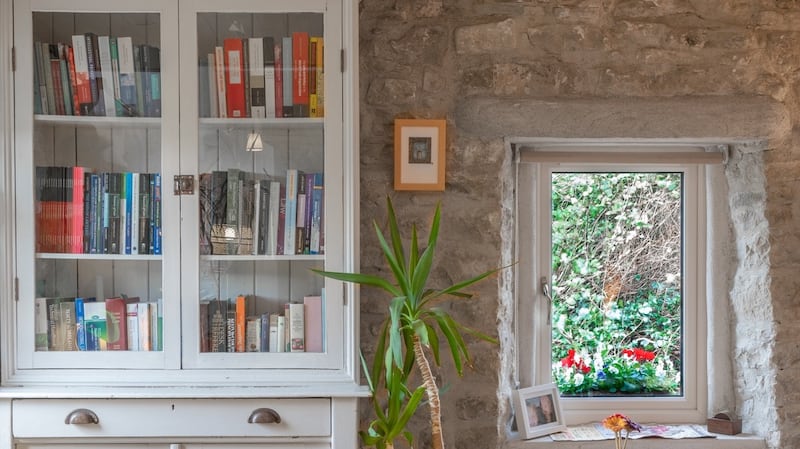
Achieving their self-build took the couple almost four years. It took three years of planning and construction before they had a proper bedroom, one they didn’t have to access via a ladder.
But don’t let that put you off. By all means dream and visualise, they say, but also do research on what materials and labour cost before you ever take on such a job.
“Factor in many planning visits. Even before we bought the cottage we’d booked a pre-planning meeting with the council to see what we might be able to do,” says Saoirse.
'Spend as much money as is painful on a decent stepladder so that if you're atop it all day it won't kill your feet'
Staging the build also gave them time to move into the cottage before they applied for planning to add the sizeable, two-storey extension. By then the derelict cottage had became their home.
“This made it easier to apply for an extension,” Martin explains. Even so it took five pre-planning meetings before they got the go-ahead.
Having a budget is important but you can be creative with it, counsels Saoirse. “There is an element of current thinking that you have to put huge expenditure into your home. If you’re under financial pressure you won’t be able to enjoy your property.”
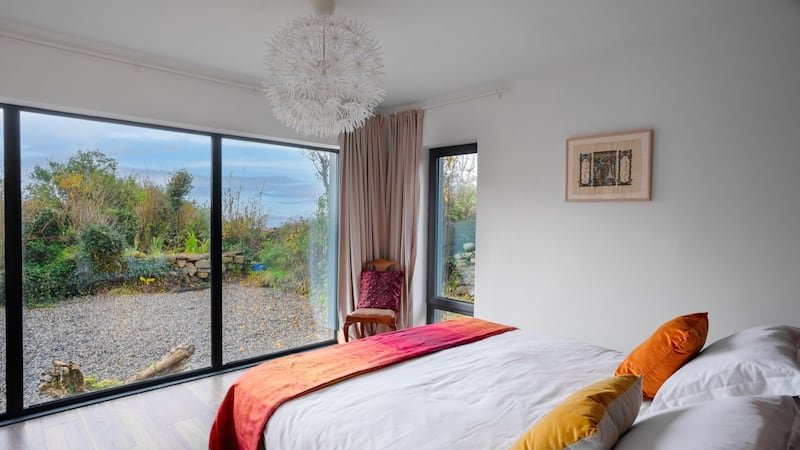
The house now extends to about 140 sq m.
“The renovation and new build was really energising and satisfying,” says Martin. “It’s like two houses, with a separate kitchen and living room, at either end. It’s also a great influence for the lads to see that if you put in the sweat you get the rewards.”
Before he started any works he constructed a shed to keep building material dry. He says it means fewer accidents and less waste.
It wasn’t plain sailing and there were some injuries in the early days. A trail of ivy that covered the cottage poked Martin in the eye and he ended up in A&E.
Now a building veteran, he says you will need steel-capped boots, a decent pair of gloves and eye goggles before you start a similar project. A good stepladder is also essential.
“Spend as much money as is painful on a decent stepladder so that if you’re atop it all day it won’t kill your feet,” he says.
Home of the Year returns on Tuesday, February 15th at 8.30pm on RTÉ One
Self Build Live showcases construction options and takes place at Citywest, Dublin from March 11th to 13th; Millstreet, Cork from May 7th to 8th and at TEC Belfast from September 30th to October 2nd, selfbuild.ie

















